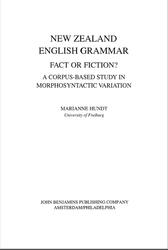New Zealand English (NZE), like Canadian, South African and Australian English, belongs to those national varieties of English that are not fully institutionalised (cf. Quirk 1990:6), i.e. its standard has not yet been described. On a scale that measures the degree of codification, Clyne (1995:22f.) distinguishes "full centres" like the US and Britain from "nearly full centres" (Australia) and "semi-centres" like Canada and New Zealand. The main difference between "nearly full centres" and "semi-centres" is that the latter have been recognized as separate varieties but no attempts have been made to codify the national variety. For Australian English, the major step in becoming a "nearly full centre" was the publication of the Macquarie Dictionary in 1981. With the recent publication of the Oxford Dictionary of New Zealand English (1997), its Tasmanian cousin has also crossed the threshold and become a "nearly full centre".1 But so far, only the lexicon of NZE has been codified. The present study is to be seen as a further step towards the codification of NZE. It focuses on the less accessible aspect of grammatical variation. Specifically, I would like to investigate whether the following assumption by Greenbaum can be upheld.

